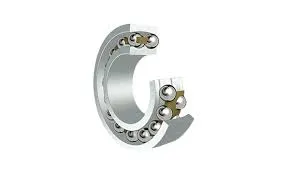
Dec . 05, 2024 14:32 Back to list
Specifications and Features of the 6210 Bearing for Optimal Performance
Understanding the 6210 Bearing Specification
Bearings are essential components in various machinery and industrial applications, serving as the interface between moving parts and facilitating smooth motion. One of the most commonly referenced bearings in engineering and manufacturing is the 6210 bearing. This article delves into the specifications, features, and applications of the 6210 bearing, shedding light on its importance in modern machinery.
What is a 6210 Bearing?
The 6210 bearing refers to a specific type of deep groove ball bearing, which is designed to accommodate both radial and axial loads. The design features a simple and robust structure that allows it to handle moderately heavy loads while minimizing friction. The 6210 designation follows the International Organization for Standardization (ISO) standard, which covers various sizes and types of ball bearings.
Dimensions and Specifications
The 6210 bearing is characterized by its dimensions, which are defined in millimeters. The specifications are as follows
- Inner Diameter (ID) 50 mm - Outer Diameter (OD) 90 mm - Width 20 mm
In addition to these dimensions, the 6210 bearing has a dynamic load rating (C) of approximately 22,000 Newtons and a static load rating (C0) of around 10,500 Newtons. The bearing is typically constructed from high-carbon chromium steel, which enhances its durability and load-bearing capabilities.
Types of 6210 Bearings
There are several variations of the 6210 bearing, each designed for specific applications. Common types include
1. Open Bearings These bearings are devoid of any seals or shields, allowing for easy lubrication. They are suitable for applications where dirt and moisture exposure is minimal.
6210 bearing specification

2. Shielded Bearings Shielded versions come with metal shields on one or both sides. These shields protect the internal components from contaminants while retaining lubrication.
3. Sealed Bearings Sealed bearings feature rubber seals that provide an enhanced barrier against dirt, moisture, and other contaminants, making them ideal for harsh environments.
Applications of 6210 Bearings
The versatility of the 6210 bearing makes it suitable for a wide range of applications across different industries, including
- Automotive In vehicles, the 6210 bearing is commonly found in applications such as wheel hubs, alternators, and electric motors. - Industrial Machinery Many types of equipment, including pumps, compressors, and conveyor systems, utilize 6210 bearings due to their reliability and efficiency. - Household Appliances From washing machines to refrigerators, the 6210 bearing plays a vital role in ensuring the smooth operation of various household appliances. - Electric Motors These bearings are often used in electric motor applications due to their ability to handle both radial and axial loads effectively.
Advantages of 6210 Bearings
The 6210 bearing offers several advantages that contribute to its widespread use
- High Load Capacity The 6210 bearing is capable of handling significant loads, making it suitable for heavy-duty applications. - Low Friction The deep groove design minimizes friction, enhancing operational efficiency and reducing energy consumption. - Versatile Applications Its adaptability makes it a go-to choice for various industries, simplifying inventory management. - Ease of Maintenance Depending on the type, 6210 bearings can be easy to lubricate and maintain, increasing the equipment's overall lifespan.
Conclusion
The 6210 bearing is a critical component in multiple applications, offering robust performance, versatility, and reliability. Understanding its specifications and types is essential for engineers and manufacturers to make informed choices when selecting bearings for their designs. Whether in automotive, industrial, or household applications, the 6210 bearing continues to be a cornerstone in the engineering world, demonstrating its enduring importance in machinery and equipment operation.
Latest news
-
Premium Deep Groove Ball Bearings | High Speed & Reliability
NewsAug.29,2025
-
Durable Scaffolding Clamps - Secure & Reliable Tube Connectors
NewsAug.28,2025
-
Common Failures in Thrust Ball Bearings and Solutions
NewsAug.22,2025
-
How Tapered Roller Bearings Can Take Shock Loads
NewsAug.22,2025
-
Angular Bearings in High-Precision Spindles
NewsAug.22,2025
-
The Impact of Misalignment on Cylindrical Roller Bearing Performance
NewsAug.22,2025
